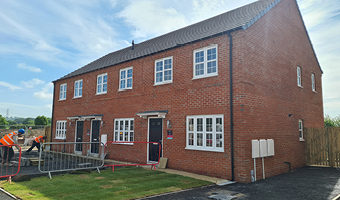Chancellor Rishi Sunak is expected to announce a ‘fundamental’ review into the business rates system in his first budget on 11 March 2020, with one possible scenario that business rates are replaced with a land value tax. Colin Hunter, Director of Business Rates in our Leeds office, explains the practical implications of such a move in more detail.
The need for reform
The current business rates system is a property tax based on Rateable Values, which are calculated by the Valuation Office Agency (VOA) every five years. The Rateable Value is set in line with the rental value of the property two years before the start of a Rating List and the rates burden currently averages out at 50% of that assumed historic rent.
Business rates are undeniably placing a heavy burden on ratepayers. None more so than those in the retail sector, who cite soaring business rates as one of the underlying causes of our failing high streets and town centres.
It is widely claimed that the system is no longer fit for purpose and, while previous governments have ‘tinkered’ around the edges by introducing more frequent revaluations, radically reforming the appeals system and introducing various reliefs, these changes are not producing the responsive system of taxation required by ratepayers.
However one of the most punitive aspects of the current business rates system is the limitations on changes between rating lists. So that properties which should have very significant reductions in liability do not receive those benefits immediately and for larger properties may not receive the full benefit of the reduction in the life of the rating list.
An alternative approach
Amid growing calls for an alternative approach to the current system, Land value tax (LVT) has attracted a lot of interest. But what exactly is LVT and is it the panacea everyone is searching for?
In theory LVT does what it says on the tin; it is a tax on the land value of commercial sites.
Sounds simple enough; however, when you dig beneath the surface, it poses more questions than answers>
- What happens in highly developed areas such as town centres, where vacant land is in scarce supply and there is no transactional evidence on which land value can be based?
- f we follow the same assumptions on mode and category of use for valuation as those adopted for Rateable Value, to what extent do we factor in alternative uses based on either actual planning consents or zoning?
- If land value is calculated on a price per hectare, how do we allow for differences in the actual buildings? For example, a city centre office building sitting on a plot of 0.1 hectares might be 10 or more storeys high while the adjacent building with the same plot size is only two storeys high. A land value that has regard simply to the value of the plot will give an equal value to these two adjoining buildings, whereas the rental income from the two will be radically different.
- How do we value land for which there is no transactional evidence for the mode or category of use, for example museums or land which could not be redeveloped due to planning constraints, e.g. listed buildings or scheduled ancient monuments.
- How do we value vacant plots which are currently undeveloped because development at this time is not viable? If we simply apply a value based on current planning or last use then this will not be in keeping with the current mode or category.
- How do we account for age and obsolescence of the buildings on the site? For example, a one hectare plot with a 1950s industrial shed will have the same land value as an adjoining plot with a new high bay distribution warehouse but the income potential from the two for the landlord is radically different.
- Alternatively, if land value of developed sites is instead based on a percentage of the value of the land and buildings, what percentage of the total value is adopted and how is that justified?
More fundamental to these questions is what is the assumed interest we are valuing? Do we assume unencumbered freehold, long leasehold or the actual ownership? Could there be more than one value if there is a ground lease or long leasehold in place with sub-lettings to actual occupiers.
Shift in responsibility
Instead of the occupier being liable as is currently the case, a move to land value tax would transfer the financial burden to the land owner, which many argue would create a much more level playing field. But how do we define ownership?
For rating purposes, ownership is defined as the person having the right to occupy. This is clearly unworkable for land value, especially if the building on the land has multiple occupiers.
If the owner is defined as being the freeholder then how will the tax allow for long ground leases where the freeholder receives only a peppercorn or minimal rent? If ground leases are taken as “ownership” will this give rise to 2 or more taxpayers for the same plot of land?
If the intention is to move the rates burden away from the occupier, how will this benefit owner-occupiers?
There is limited evidence that the introduction of Small Business Rates Relief has led to an increase in rents for affected properties. The reality of the market negotiations is that both parties will have regard to the total costs of occupation, i.e. rent and rates plus repairs insurance, etc. Therefore, if the rates burden is shifted from the occupier to the owner, the likely outcome will be an increase in rents and the tenant will therefore indirectly still be liable for the tax.
How will the owner be identified? The land registry document identifies the individuals at the date of the transaction. If the owners relocate or change their name, then how will the billing authority identify the person to be billed?
The identification of the owner will be even more difficult if the land has never been registered.
What about the owners and owner-occupiers of exempt properties such as churches and other religious organisations, or, farmers. Will exemptions still apply or will farm land and other exempt properties now be subject to a property tax?
Unintended consequences
The shift in burden from occupier to owner will have an impact on investment appraisal and will increase the costs to existing owners of large estates such as local authorities and pension funds. Whilst the impact of the tax, over the long term, will fall inevitably be transferred, at least in part, to the occupiers, the short term impact on owners may be sufficient to cause funds to fail by becoming insolvent. For commercial land owners many will have acquired the property using borrowed capital. If the tax is onerous, this may lead to defaults on mortgage payments.
The introduction of LVT will impact on investment decisions and will have a negative impact on the viability of development schemes. Although there will be some transfer of the burden to eventual occupiers, this transference is unlikely to be 100%. However the occupiers will have no right of appeal to redress any errors in the tax base.
Large land owners will be penalised affecting returns on investments impacting on pension funds and reducing the growth of fund values and the ability to meet commitments to pension payments.
This shift in taxation will still not address the inequity between property based businesses and web based businesses.
The future
Ultimately, a move to LVT is in effect a move away from reality and will therefore inevitably create more inequity between ratepayers and greater scope for dispute.
We do need a more responsive system, but the introduction of shorter revaluation periods and the removal of limitations on decreases in liability would potentially resolve this short-coming.
REGISTER FOR UPDATES
Get the latest insight, event invites and commercial properties by email







